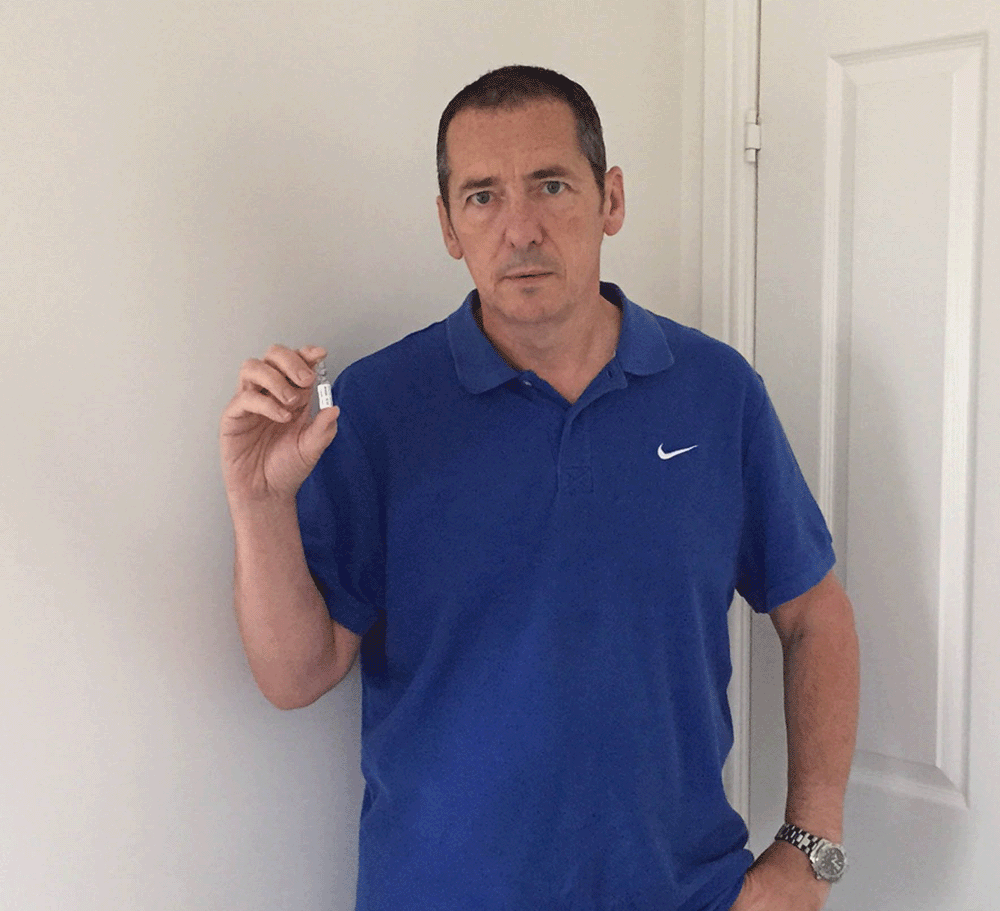A CANCER patient given two months to live by his doctors seven months ago is in remission – after injecting himself with mistletoe.
Dave Reynolds, 50, was told in February this year that his Non-Hodgkin lymphoma was terminal.
The father-of-three was told by the NHS that his treatment would have to be stopped and that he would likely be dead within weeks.
The BT investigations manager was persuaded by his wife, Dian, 48, to try a controversial treatment involving extracts from the mistletoe plant.
The treatment, which involves a one-off cost of £2,500 followed by payments of £200 a month, has been described by researchers as having no proven benefit.

But after receiving injections at a clinic in Aberdeen, Dave says he can now hope to see his grandchildren growing up.
Non-Hodgkin lymphoma is an uncommon cancer which develops in the networks of blood vessels and glands in the body. The disease kills almost a third of patients within five years of diagnosis.
Dave had the “high-grade” type of the disease, which was diagnosed in June 2015, and progressed very rapidly. He said: “I ended chemotherapy in February this year and was told I had two months to live shortly afterwards.
“After this devastating news, I was depressed and was just spending time staring out of the window.
“My wife saw the mistletoe therapy in an article online, I never thought it would do me any good, but she said to me, we’ve got to try something.
“My GP warned me to be careful because there’s loads of cranks out there trying to prey on desperate people like me, but we researched this one thoroughly and found testimonials from people talking about its success.”
Dave said that he not expected to send his cancer into remission via the treament, and was astounded when he eventually saw the scans giving him the all clear.
He said: “The clinic I went to in Aberdeen, I would stress, did not say the treatment would cure me, they said it would improve my quality of life, and perhaps lengthen my life.
“Scans have showed now that I have gone into remission, although the Non-Hodgkin Lymphoma could come back in the next five years.
“When I went to my doctor and got the scans I was hoping the size of the cancer may have decreased.
“I could not believe when I was told there were no hot spots, and the cancer had gone into remission.
“The only thing I changed was taking the mistletoe and taking vitamin C and supplements.”
The therapy which Dave received in Aberdeen was provided by the charity Camphill Wellbeing Trust.
The charity say that they promote mistletoe therapy as part of an “integrative approach” to cancer treatment.
This means combining evidence-based medicine, with so-called ‘alternative medicine.’
Dave said: “We had to stay at the centre initially, and although I now inject myself twice a week at home, I still have to go back to the centre about every four weeks.
“It costs about £2,500 at least, but I hope that in the future this is available on the NHS, after its undergone some proper trials.
“I trust the NHS doctors and I’m now looking for a stem cell donor again now, but this therapy gave me a huge boost. When I started it, I got my appetite back, I got a lift.”
Health services in several European countries, including Germany, prescribe it as treatment for cancer.
Those who support the therapy believe that it boosts the immune system and prevents the growth of blood vessels needed for tumors to thrive. The theory is based on the fact that mistletoe is a parasitic plant and this property is brought to bear on cancer cells.
Mistletoe therapy is not usually available on the NHS and treament can take a long time, so the charity is aiming to raise money to make the therapy accessible for everyone.
To support the charity, his family friend Ailsa Golighty is taking part in a sponsored skydive this weekend. She originally aimed to raise £500, but has already passed this target.
In 2000, ex-England cricketer John Edrich was diagnosed with leukaemia, and told he had seven years to live.
Twelve years later, in 2012, he said his life had been saved after treatment by a doctor at Camphill Wellbeing Trust. He is still alive today.
Speaking at the time, Dr Stefan Geider, from the Camphill Wellbeing Trust, said: “Mistletoe has to my experience helped a lot of patients tremendously.
“But it does not work for everybody – it’s not a miracle cure. We need to find out why the mistletoe works for some people, and not for others – that’s why we need the trials.”
An article by Edzard Ernst in the British Medical Journal in 2006, said that mistletoe therapy “has no proved benefit, and can cause harm.”
It reads: “Mistletoe has been tested extensively as a treatment for cancer, but the most reliable randomised controlled trials fail to show benefit, and some reports show considerable potential for harm.
“The costs of regular mistletoe injections are high. I therefore recommend mistletoe as a Christmas decoration and for kissing under but not as an anticancer drug.”

